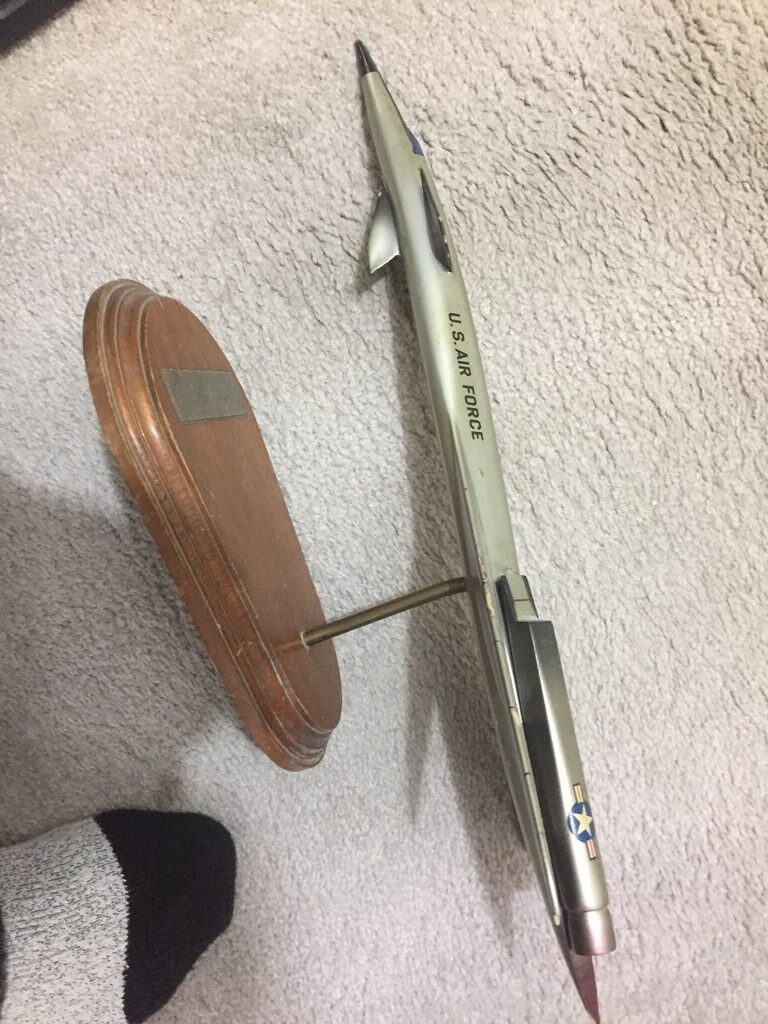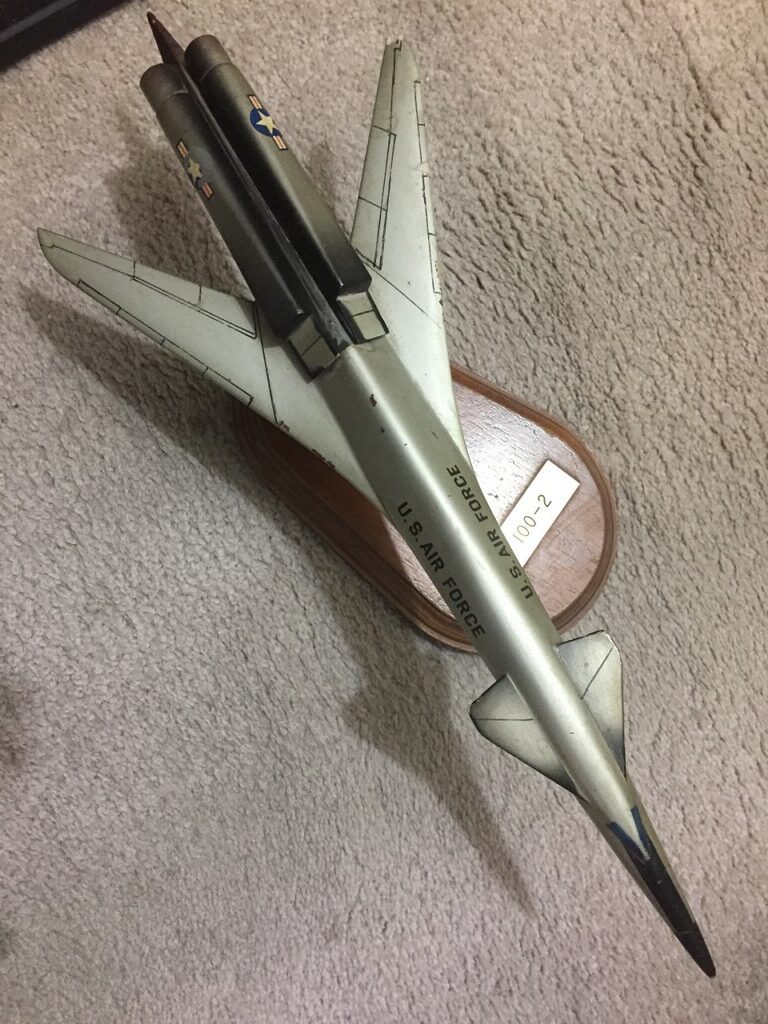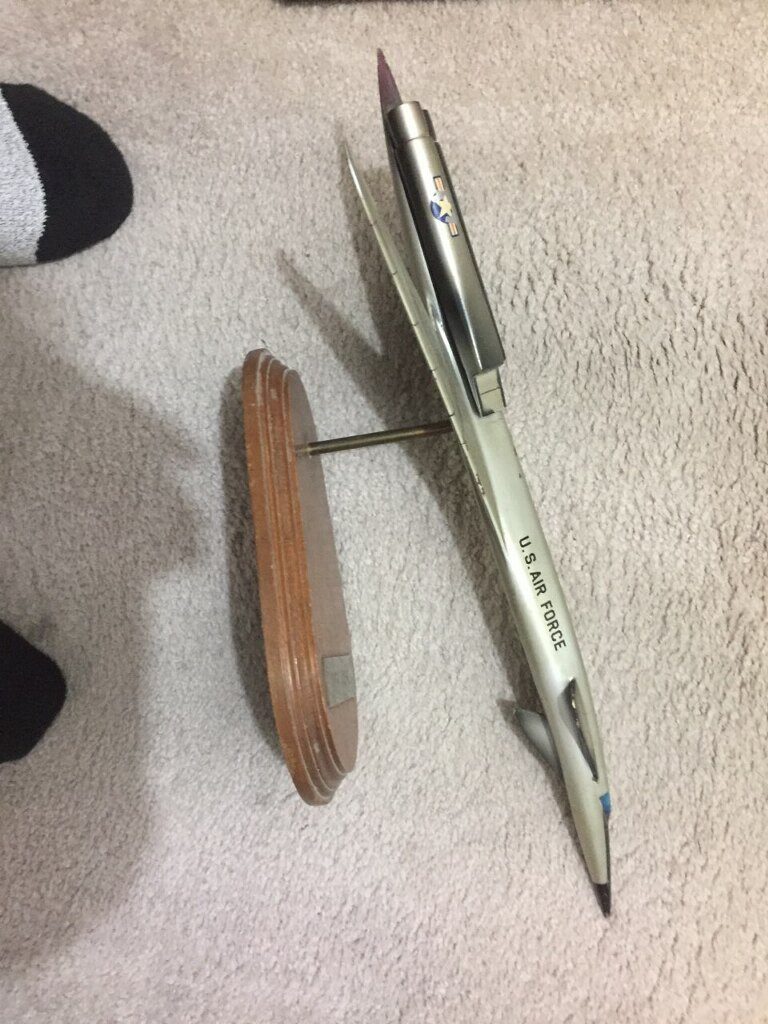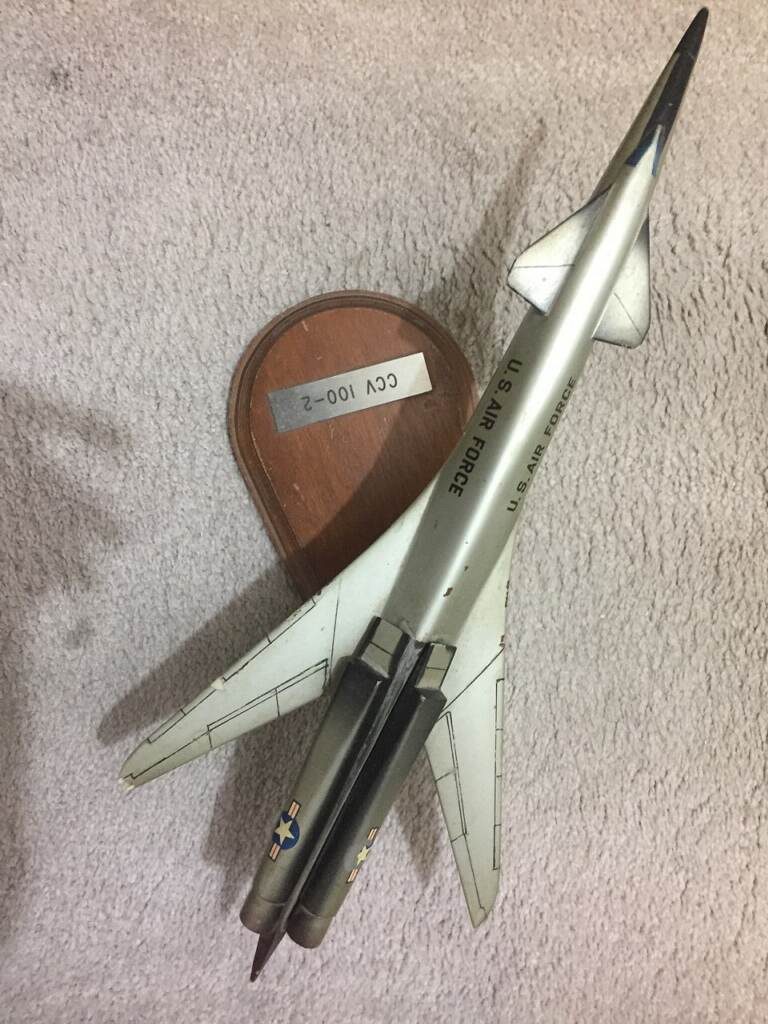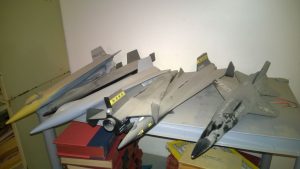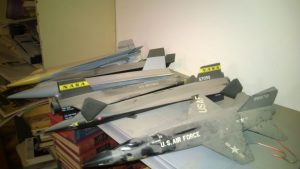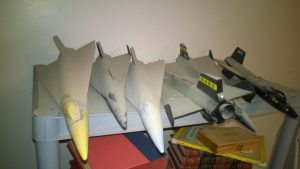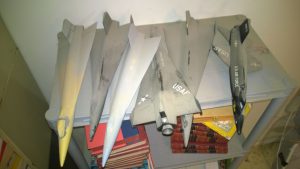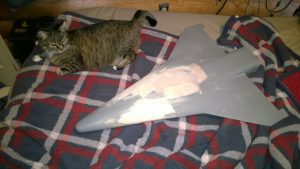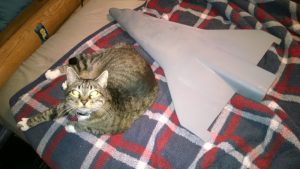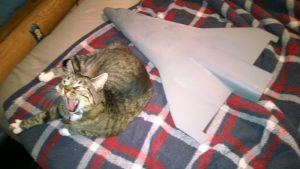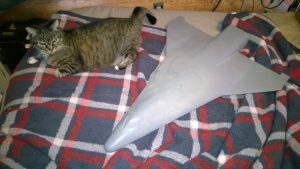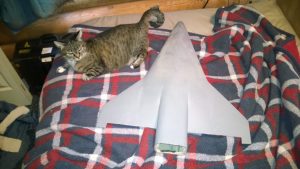When I first saw the thumbnail and title of the video, my initial thought was “I wish there was a store like that somewhere within a few hundred miles of me.” Having gone through the video… I’m really kinda glad there isn’t.
This model was shown with some regualrity about 60 years ago, an early representation of the hoped-for “Nova” rocket which was planned to put astronauts on the moon. I would’ve expect that the model had been long ago lost, but it seems to be held by the Smithsonian… and it’s much larger than expected at 1/72 scale and 48 inches long:
Model, Rocket, Nova, 1:72
You can zoom in on the image at the Smithsonian link above, though good luck on downloading the full-rez version.
I have previously linked to a vintage photo of the model HERE. And if you want one of your very own, Fantastic Plastic is in the process of working on a set of Nova/Post-Saturn rocket models:
Post-Saturn Super-Booster Collection
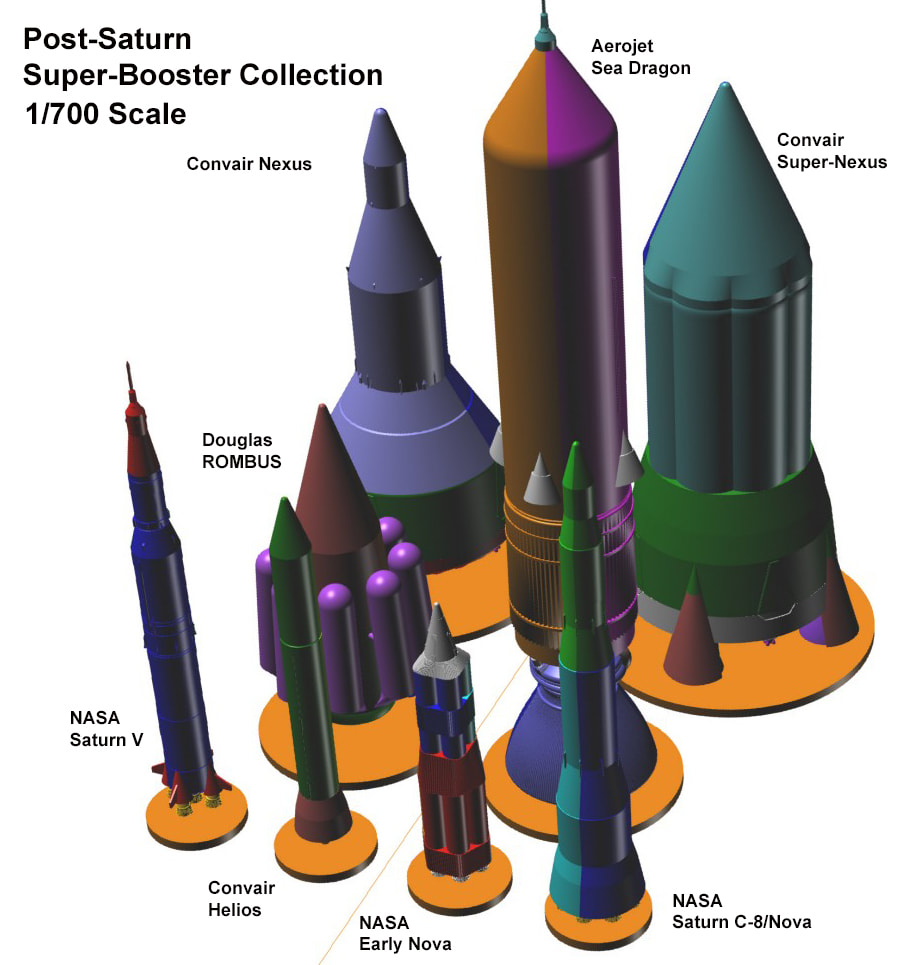
A little while back I was contacted by someone who had an old display model of a Boeing Controlled Configured Vehicle bomber and wondered if I was interested in buying it. Interested? Yes. Able? No. But I was able to put the seller in contact with someone else who was able to procure it, so this Boeing CCV-100-2 wound up in a good home. More on the CCV-100-2 is HERE. Still no confirmation of the scale of the vehicle, sadly.
Some recently unveiled helicopter mockups look promising, but they are just mockups. Build them, test them, prove them out… and if they work as advertised, put them into mass production ASAP before the Chinese stamp out ten thousand cheap copies.
UPDATE: AUCTION HAS ENDED.
Here are some things that I think *should* be of considerable interest. If you are indeed interested in making a bid, send it via email to:  Buyer is responsible for postage, which for most of these can be Media Mail for low cost. Auction will end 48 hours after I put this post online. Items and photos after the break…
Buyer is responsible for postage, which for most of these can be Media Mail for low cost. Auction will end 48 hours after I put this post online. Items and photos after the break…
UPDATE: AUCTION HAS ENDED.
For sale to the highest bidder… a lot of 1/40 scale (same as the vintage Topping display model) X-15’s, mostly X-5A-3 stretched delta-winged configurations. These are solid-cast resin models that I worked on a number of years ago. From left to right:
1: An incomplete model with the Marquardt SERJ airbreathing engine
2: An incomplete X-15A-3 with upward-swept wingtip fins
3: An incomplete X-15A-3, missing fins.
4 & 5: Completed, painted and decaled X-15A-3 models
6: A vintage Topping X-15 model.One of the horizontal stabilizers had broken off, and repairs were underway.
These are, again, incomplete (except for #4&5), but a decently skilled modeler could finish the job. What you see in the photos is what you get. Except the dust. I’ll blow that off. The level of dustiness might give an indication of how long these have been sitting abandoned. Buyer also pays postage by whatever means desired. If you’d like to bid, send an email to:  Bidding ends 48 hours after this is posted. There won’t be any more of these, at least not from me: the molds are not only old, they are now in a landfill.
Bidding ends 48 hours after this is posted. There won’t be any more of these, at least not from me: the molds are not only old, they are now in a landfill.
Better part of 20 years ago I started building a 1/24 scale model of the Black Horse SSTO spaceplane. This USAF design was a purely rocket powered vehicle, with engines that burned kerosene-based fuel with hydrogen peroxide oxidizer; it would take off horizontally from a runway with the H2O2 tanks prit near empty, rendezvous at altitude with a tanker aircraft and bring aboard all the H2O2 it needed, then blast off for orbit. It was a cool concept, and it *might* have even worked. So for reasons of my own I decided that what the world needed was a ridiculously large model of the Black Horse. I got as far as a fiberglass shell of the main wing/body, missing only control surfaces, wingtip fins, rocket engines and surface detailing. And then… life intervened, the model got set aside and put out of the way, out of sight and out of mind.
So… anyone want it? As is, with a light dusting of genuine artisanal Utah dust. No reasonable offer refused. Shipping cost is on the buyer; I expect it’ll cost a fair amount, but it is pretty rugged since it’s fiberglass (the original was made of foam and plaster, a fiberglass mold made and a fiberglass shell cast for the final finishing which I never got to). If nobody wants it, no sweat… off to the trash. I’ll give it a day or so.
He’s made quite a number of these cardboard guns. *Some* of them seem like they might be turned into kits that could be produced from simple flat sheets, but even the simple ones would require a substantial degree of skill and determination.
There is currently an item on ebay that the *title* of had me very interested, but the actual photos fire off my BS alarms:
North American XF-108 Rapier Aircraft Contractor Model / Topping Precise / Allyn
A vintage F-108 display model made by the NAA model shop or by an official contractor for NAA would be a very interesting item. But… that’s not what we’ve got here. Observe:

This is not a North American Aviation design. It is, in fact, copied from the 1960 ITC “F-108 Rapier” model kit. This was designed before the F-108 design was revealed to the public, and was basically a fictional concept based on the North American “Navaho” intercontinental cruise missile.

The model is not actually an assembled ITC Rapier kit. It looks like one of the Asian specially-made “genuine Philippine mahogany” models that you can have made. Which is fine if that’s what you want, but that’s not what the ebay listing says it is. Quote: “For sale is a rare XF-108 Rapier contractor style model. I am unsure of the manufacturer -possibly Topping/Precise. ” Note: “style.”
As of this writing there are 15 bids, up to $140. This seems a bit much for a meh-quality modern replica of a meh-quality model kit. If this is something you’re interested in bidding on, keep in mind that this is *not* a North American Aviation design, but a design by a short-lived (1957-64) model kit company that had no special insight.
We’re in something of a golden age of model kits for the Star Destroyer from Star Wars. NOTE: this applies only to the Star Destroyers form the original trilogy; if you want a model of the Star Destroyer from the sequel trilogy, you’re just plain out of luck. Just as if you’d wanted the sequel trilogy to actually be *good* Star Wars, I suppose.
Anyway, the Japanese model kit company Bandai is soon to release two new SD models. Bandai mostly seems to focus on kits of those ridiculous anthropomorphic giant robotic “mech suit” things that are apparently overly popular in anime, but their Star Wars kits are usually exquisite.
As always: if you order one of the items from the Amazon link below, or use the link to go further into Amazon and buy other stuff, I get a small pittance. So you can help a brother out while loading up on Star Destroyers.
First up a 1/5000 scale Star Destroyer, complete with in-scale blockade runner and Millenium Falcon. The SD is modeled after the one from “Empire Strikes Back” which is substantially different from the one in “A New Hope” (and “Rogue One”), so the blockade runner is a little out of place, but I don’t suppose too many people are gonna care.
At 12.6 inches long, it’ll be a little smaller and a lot more expensive than the smaller of the Revell kits, but the detailing should be vastly improved.
Also coming soon from Bandai, a dinkyscale model of the Super Star Destroyer. Small, but cheap and very likely ridiculously detailed.
If you want a more sizable (more than 2 feet long) Super Star Destroyer, and especially if you don’t want to have to put one together, this just came on the market. It seems to be well received.
Available for a few years now is the Bandai dinkyscale Star Destroyer. Cheap, but a beautiful little thing. I’ve shown one I built hereabouts before.
Also available for some years now is the smaller of the two Revell models, a “Snaptite Build and Play” kit. Low on detail, but reasonably accurate, with a built-in sound and light system. Designed more or less to be built by kids, assembly is easy and quick, and the parts thickness is such to make it pretty rugged.
Last is the gigantic 1/2700 kit, originally released by the Russian model kit company Zvezda, re-released by Revell. Pricey, but since it’s about twice the size of the new Bandai kit while being only 25%or so more expensive, it’s a pretty good deal. Assuming, of course, you have someplace to put it.

